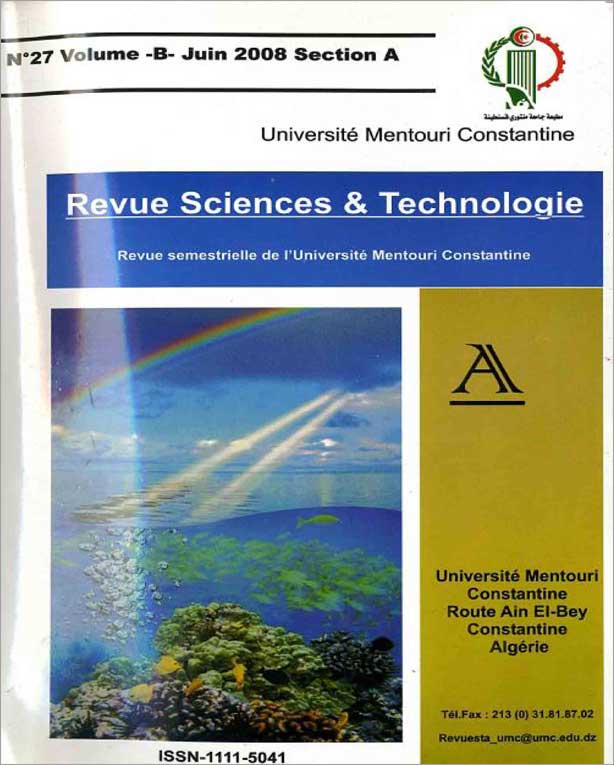BIOREGENERATION in situ DE FILTRE DE CHARBON ACTIF EN GRAI
Keywords:
Phénol, charbon actif, adsorption, Biodégradation, cinétique, Pseudomonas aeruginosaAbstract
Le présent travail consiste à mettre en oeuvre une technique de régénération d’un filtre de charbon actif en grain en lui adjoignant (par fixation) une bactérie capable de dégrader le phénol : Pseudomonas aéruginosa. Par la suite, le taux de régénération en fonction des conditions opératoires tels que la concentration de l’effluent et la hauteur du lit ont été évalué. Enfin, la cinétique du processus a été déterminée en appliquant le modèle de Thomas. Les résultats montrent que l’ensemencement bactérien joue son rôle derégénérateur d’adsorbant en augmentant la durée de vie de ce dernier. Les constantes cinétiques des deux processus, calculées selon le modèle de Thomas, sont de même ordre de grandeur, par conséquent les deux mécanismes sont, simultanés, additifs et complémentaires.
Downloads
References
- Schborn, E. Catalogue des normes de pollution, V3. http://www.gtz.de/publika/vol 363.HTM (1995).
- Nemerow, L.N. Industrial Water Pollution - Origin, Characteristics and Treatment. Addison-Wesley, London. (1978).
- Vinitnantharat, S., Baral, A., Ishibashi, Y., Ha, S.R.
Quantitative bioregeneration of granular activated carbon loaded with phenol and 2,4-dichlorophenol. Environmental Technology 22, (2001) 339–344.
-Walker, G.M., Weatherley, L.R. (1998). Bacterial regeneration in biological activated carbon systems. Process Safety and Environmental Protection 76, 177–182.
- Kumaran P., Paruchuri, Y.LKinetics of phenol biotransformation. Water. Research. 31, .(1997) 11-22.
-Abu-Salah K., Shelef G., Levanon D., Armon R., Dosoretz, C.G. Microbial degradation of aromatic and polyaromatic compounds adsorbed on powdered activated carbon. Journal of Biotechnology. 51, (1996) 265-272.
- Kim H.W., Nishijima W., Shoto F., Okada M. Competitive removal of dissolved organic carbon by adsorption and biodegradation on biological activated carbon. Water Science and Technology. 35, (1997) 147–153.
Sirotkin AS, Koshkina LY, Ippolitov KG The BAC-process for treatment of wastewater containing non-ionogenic synthetic surfactants. Water. Research. 35, (2001) 3265–3271
A.Namane, A. Hellal. Dynamic adsorption characteristic of phenol by granular activated carbon. Journal of Hazardous Material B137, (2006) 618-625.
Thomas H.C. Heterogeneous ion exchange in a flowing system. Journal American Chemical Society. 66, (1944) 1664-1676.
- Clesceri, L.S., Greenberg, A.E., Trussell R.R. Standard Methods for the Examination of Water and Wastewater, American Public Health Association, Washington (2000).







